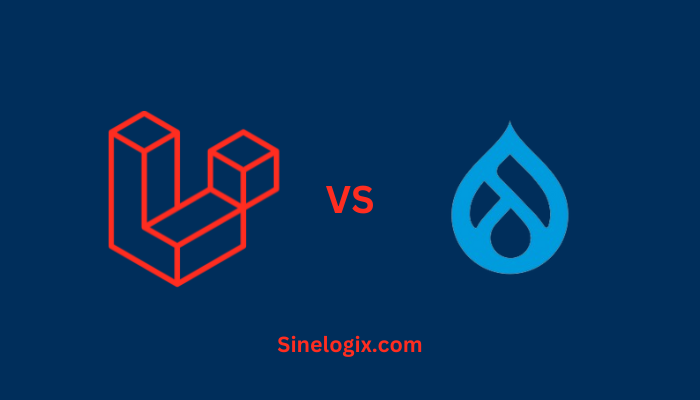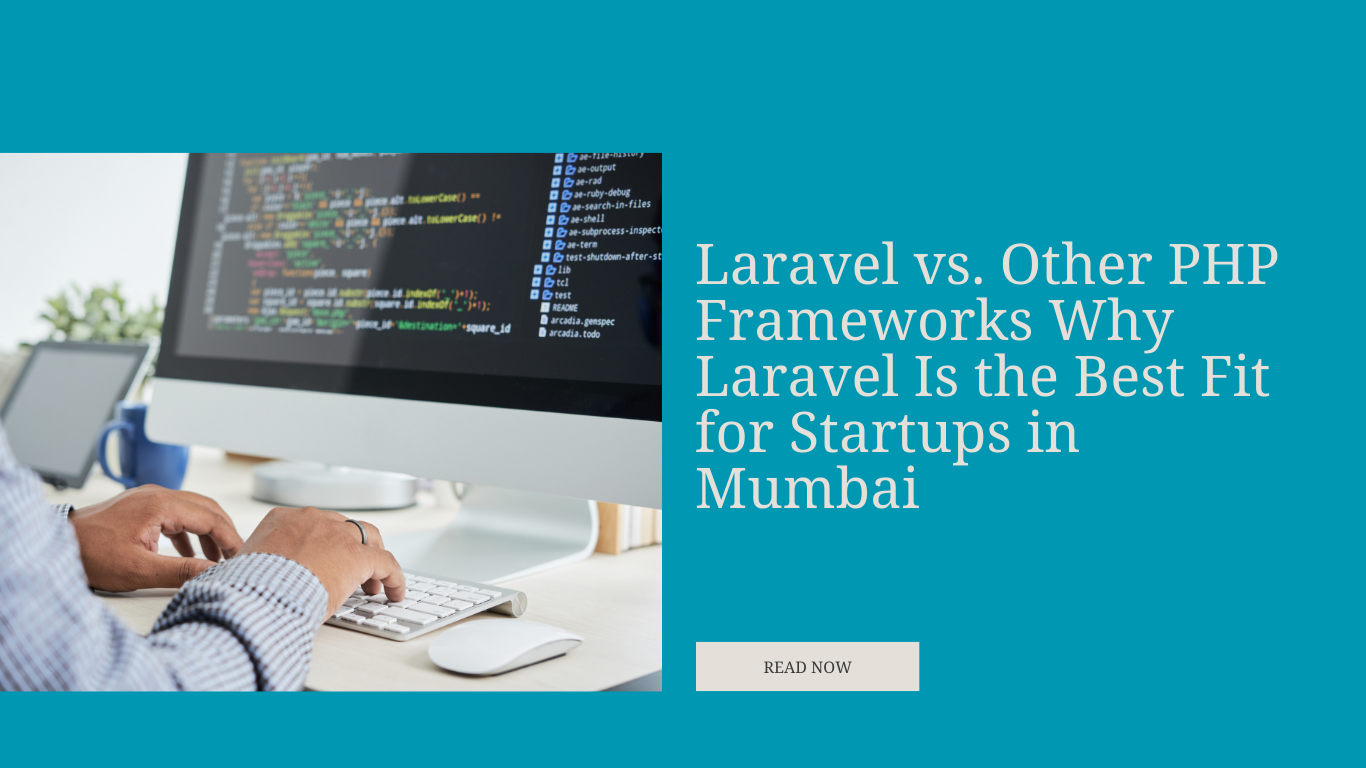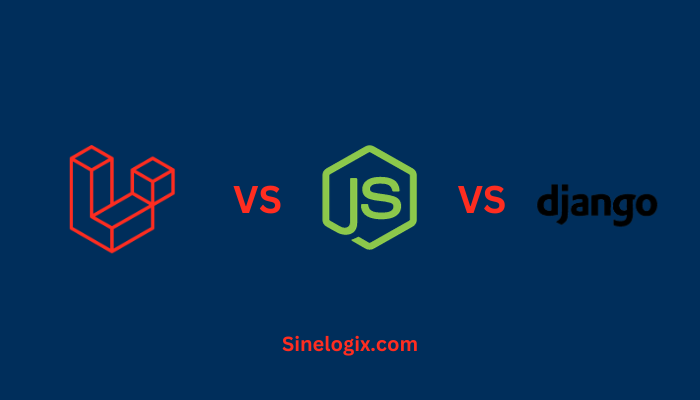In the dynamic realm of web development, choosing the right framework or content management system (CMS) is crucial for the success of a project.
Laravel, a PHP-based web application framework, and Drupal, a powerful and extensible CMS, represent two distinct approaches to building web applications.
This comprehensive comparison will delve into the unique features, strengths, and considerations of Laravel and Drupal.
Overview of Laravel and Drupal
Laravel: Laravel is a PHP web application framework celebrated for its elegant syntax, developer-friendly environment, and rapid development capabilities. Following the Model-View-Controller (MVC) architectural pattern, Laravel provides a set of tools for routing, templating (Blade engine), and Object-Relational Mapping (ORM) through Eloquent. Laravel’s simplicity and versatility make it well-suited for various web applications, from small projects to enterprise-level solutions.
Drupal: Drupal, a content management system written in PHP, is renowned for its flexibility and extensibility. It empowers users to create and manage a wide range of websites, from personal blogs to enterprise-level portals. Drupal’s modular architecture allows for the seamless addition of features through modules, making it a preferred choice for projects with diverse requirements.
Use Cases and Target Audience
Laravel: Laravel is a general-purpose framework suitable for a broad spectrum of web applications. Its elegant syntax and emphasis on clean, maintainable code make it an excellent choice for startups, small to medium-sized businesses, and developers who prioritize rapid development. Laravel excels in scenarios where a versatile framework is needed, especially those requiring frontend rendering and a robust MVC structure.
Drupal: Drupal, with its CMS roots, is specifically designed for content-driven websites and applications. It caters to users seeking a comprehensive platform for managing digital content, from articles and images to complex data structures. Drupal is particularly well-suited for building community websites, government portals, and projects with intricate content management needs.
Architecture and Design Philosophy
Laravel: Laravel adheres to the MVC architectural pattern, promoting a clean separation of concerns. Its design philosophy revolves around developer happiness, expressiveness, and the creation of elegant code. Laravel’s opinionated approach simplifies common tasks, allowing developers to focus on building features rather than dealing with low-level details.
Drupal: Drupal’s architecture is based on a modular design, allowing developers to extend its functionality through modules and themes. The platform follows a content-centric approach, treating everything as content entities. Drupal’s design philosophy emphasizes flexibility, extensibility, and a focus on structured content, making it suitable for projects with intricate content models.
Learning Curve and Development Experience
Laravel: Laravel is known for its developer-friendly syntax, making it accessible for PHP developers of varying skill levels. The framework provides comprehensive documentation, guides, and tutorials, easing the learning curve. Laravel’s dedicated tools, such as the Artisan command-line interface, contribute to a streamlined development experience.
Drupal: Drupal has a steeper learning curve compared to Laravel, primarily due to its modular and content-centric architecture. Developers working with Drupal are required to understand the system of hooks, entities, and the Drupal-specific terminology. While Drupal offers extensive documentation and a supportive community, mastering the intricacies of the platform may take more time.
Community and Support
Laravel: Laravel boasts a large and active community, contributing to its growth and improvement. The Laravel community is known for its helpful forums, third-party packages, and regular updates. Laravel’s popularity ensures ongoing support and a wealth of resources for developers, including Laracasts for video tutorials.
Drupal: Drupal has a dedicated and vibrant community focused on content management and web development. The Drupal community actively contributes to the development of core features and maintains a vast repository of modules and themes. The community-driven nature of Drupal ensures continuous support and a collaborative environment for developers.
Performance and Scalability
Laravel: Laravel offers good performance for PHP applications and is suitable for various project sizes. Its scalability is enhanced by features like caching, queuing, and optimized database queries. Laravel Horizon aids in managing scalable applications efficiently. While Laravel is performant, its strengths lie in general-purpose web development rather than content-centric scenarios.
Drupal: Drupal’s performance can be optimized through proper caching strategies, content delivery network (CDN) integration, and server configurations. The platform is designed to handle scalable content structures, making it suitable for large-scale websites. Drupal excels in scenarios where content management requirements and scalability are paramount.
Middleware and Request Handling
Laravel: Laravel’s middleware system provides a flexible mechanism for filtering HTTP requests. Middleware can perform tasks like authentication, logging, and modifying incoming requests. This flexibility enhances Laravel’s ability to handle various aspects of request processing, making it adaptable to diverse application requirements.
Drupal: Drupal’s request handling is tailored for content-centric scenarios, focusing on managing content entities and handling intricate routing for different types of content. The platform’s middleware architecture allows developers to extend and customize request handling to accommodate the specific requirements of content-driven websites.
Database Integration and ORM
Laravel: Laravel’s Eloquent ORM simplifies database operations with an expressive syntax. It allows developers to interact with databases using object-oriented methods, making it easy to perform common tasks like querying and updating records. Laravel’s database migration system streamlines schema management.
Drupal: Drupal utilizes its own database abstraction layer and does not use a traditional ORM. Instead, it relies on the Entity API for handling content entities, providing a structured way to interact with the database. Drupal’s approach to database integration aligns with its content-centric architecture.
Template Engine and Frontend Development
Laravel: Laravel employs the Blade templating engine, known for its simplicity and readability. Blade supports template inheritance and allows developers to create modular and reusable views. Laravel Mix, a wrapper around Webpack, simplifies asset compilation and frontend development.
Drupal: Drupal uses the Twig templating engine for rendering HTML markup. Twig provides a clean and secure syntax for templates, contributing to Drupal’s focus on creating accessible and maintainable frontend code. Drupal’s theming system allows developers to customize the appearance of websites efficiently.
Testing and Quality Assurance
Laravel: Laravel places a strong emphasis on testing with PHPUnit, providing a robust testing environment. Developers can conduct various types of tests, including unit tests, feature tests, and integration tests seamlessly. Laravel Dusk facilitates browser automation testing, ensuring comprehensive coverage for web applications.
Drupal: Drupal supports testing through PHPUnit as well, offering a testing framework for unit tests and integration tests. The platform’s testing tools enable developers to ensure the reliability and quality of content-driven functionalities. Drupal’s testing capabilities are particularly crucial for maintaining the stability of websites with intricate content structures.
Development Speed and Prototyping
Laravel: Laravel’s elegant syntax and built-in features contribute to rapid development. Laravel Spark, a package for SaaS application scaffolding, accelerates the creation of subscription-based web applications. The framework’s focus on developer-friendly syntax aids in quick prototyping, making it ideal for startups and projects with tight deadlines.
Drupal: Drupal’s development speed can be influenced by the complexity of content structures and specific requirements. While the platform offers powerful tools for building websites, the extensive feature set and customization options may lead to a longer development cycle compared to more straightforward projects.
Mobile App Development
Laravel: While primarily a backend framework, Laravel can serve as the backend for mobile applications. Laravel Nova or API resources can be used to expose backend functionality for mobile app integration. Laravel’s API-centric approach facilitates the development of robust and secure APIs.
Drupal: Drupal has solutions for mobile app development, including the DrupalGap module and the Decoupled Drupal approach. Decoupled Drupal allows developers to use Drupal as a backend content repository while building the frontend using a separate technology, enabling the creation of flexible and interactive mobile applications.
Community Trends and Adoption
Laravel: The Laravel community is dynamic, and the framework continues to evolve with frequent updates and new features. Laravel Vapor, a serverless deployment platform, reflects the community’s commitment to embracing modern cloud-native technologies. This adaptability ensures that Laravel remains relevant in the ever-changing landscape of web development.
Drupal: Drupal maintains a significant presence in the CMS space, with a large number of websites built on the platform. Drupal’s adoption is prevalent in industries requiring content management, including government, education, and media. The Drupal community actively engages in discussions, events, and the development of new modules.
Server Resource Utilization
Laravel: As an interpreted PHP framework, Laravel may require more server resources compared to frameworks written in lower-level languages. However, the ease of use, extensive feature set, and developer-friendly environment can justify the resource overhead in many scenarios.
Drupal: Drupal’s resource utilization depends on factors such as the complexity of content structures, the number of installed modules, and the efficiency of caching strategies. Proper server configuration and optimization practices are crucial for ensuring optimal performance and resource utilization in Drupal-based websites.
Ecosystem and Third-Party Integrations
Laravel: Laravel’s ecosystem is rich and diverse, with a wide array of third-party packages available through Composer. Laravel Forge simplifies server provisioning and deployment, while tools like Laravel Mix streamline asset compilation. The availability of packages and integrations enhances the development workflow and supports a variety of use cases.
Drupal: Drupal’s ecosystem is characterized by a vast repository of modules and themes contributed by the community. The Drupal Marketplace serves as a centralized hub for developers to share and explore extensions. Drupal’s extensibility allows for seamless integration with third-party services, making it adaptable to various web development scenarios.
Containerization and Microservices
Laravel: Laravel applications can be containerized using tools like Docker, allowing for seamless deployment and scalability. Laravel’s modular structure and support for microservices architectures make it suitable for building distributed systems. Laravel Horizon aids in managing scalable Laravel applications efficiently.
Drupal: Drupal supports containerization using Docker and can be deployed in microservices architectures. The platform’s modular design allows developers to create decoupled systems where Drupal serves as a content repository. Containerization and microservices are advantageous for scaling Drupal-based websites efficiently.
Internationalization and Localization
Laravel: Laravel provides robust support for internationalization and localization. Developers can easily manage language files, translate content, and adapt the application to different locales. Laravel’s localization capabilities contribute to building globally accessible web applications, a crucial aspect for projects targeting diverse audiences.
Drupal: Drupal offers extensive features for internationalization and localization, making it suitable for websites targeting global audiences. The Multilingual Initiative in Drupal ensures that developers can create websites in multiple languages, managing content translation, and adapting to regional preferences seamlessly.
Related Articles:
Conclusion
Ultimately, the choice between Laravel and Drupal is dictated by the nature of the project, the development team’s expertise, and the desired outcomes.
Laravel brings a sleek and versatile framework to the forefront, while Drupal stands as a heavyweight in content management, offering a robust platform for creating diverse digital experiences.
As the web development landscape evolves, both Laravel and Drupal continue to play pivotal roles, contributing significantly to the diverse tapestry of modern web applications.




